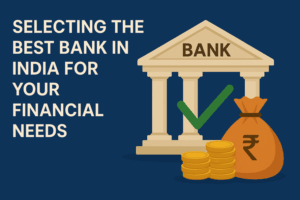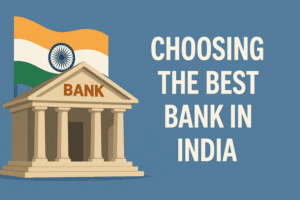
As of June 6, 2025, the Reserve Bank of India (RBI) has cut its repo rate by 50 basis points to 5.50%. This marks the third consecutive rate cut in 2025—a full 100 basis point (1%) reduction since February. For homebuyers and existing borrowers, this is more than just a policy shift—it’s a golden window to lock in the lowest home loan rates India has seen in years.
Let’s break down what this means for you and how to make the most of it.
Why This Rate Cut Matters for Borrowers
Under the External Benchmark Lending Rate (EBLR) system, most floating-rate home loans are directly tied to the repo rate. When RBI lowers the repo rate, banks are expected to reduce their lending rates too—often within days.
Several public sector banks responded immediately:
- PNB dropped its RLLR from 8.85% to 8.35%.
- Bank of Baroda slashed rates from 8.65% to 8.15%.
- Bank of India and Indian Bank made similar 50 bps cuts.
What it means for you: Lower Equated Monthly Instalments (EMIs) on existing floating-rate loans and better loan terms for new borrowers.
Which Banks Have the Lowest Home Loan Rates (June 2025)
Here’s a quick comparison of current starting rates:
Public Sector Banks (Lowest Rates)
- Union Bank of India, Central Bank, Bank of Maharashtra: Starting at 7.85% p.a.
- Indian Bank: From 7.90% p.a.
- SBI and BoB: From 8.00% p.a.
- Processing fees: Ranges from ₹1,500–₹25,000
Private Sector Banks
- Kotak Mahindra Bank: 8.49% for women borrowers
- HDFC Bank: From 8.50%
- ICICI Bank: 8.75% and up, with up to 2% processing fee
Housing Finance Companies (HFCs)
- Bajaj Housing Finance: Starts at 7.99%—the absolute lowest
- LIC Housing Finance: From 8.00% for high credit scores
Pro tip: Always check what rate you qualify for—advertised “starting rates” are for borrowers with excellent credit and ideal profiles.
What Really Determines Your Home Loan Interest Rate?
Banks don’t just look at repo rate cuts. They evaluate several personal factors:
- CIBIL Score: 750+ is ideal. Below 700? Expect higher rates.
- Employment Type: Salaried folks usually get better rates than self-employed applicants.
- Loan Amount and LTV: Smaller loans or higher down payments can mean better deals.
- Property Details: Newer, fully approved properties in prime locations are preferred.
- Co-Applicants: Adding a financially stable co-applicant may boost your eligibility and improve rates.
Fixed vs. Floating Rates: Which One’s Smarter Right Now?
Floating Rate
- Tied to repo rate → Immediate EMI savings
- Lower starting rates
- Risk: Rates could rise later
Fixed Rate
- EMI stays constant for 2–3 years or full term
- Good for budget planning
- Downside: Won’t benefit from current rate cuts
Current best choice: Floating rates make sense in this downward trend—unless you need total payment predictability.
Don’t Ignore These Hidden Home Loan Costs
Many borrowers focus only on the interest rate. But fees can add tens of thousands to your total cost.
- Processing Fees: Usually 0.25–2% of the loan amount
- Legal + Technical Valuation: ₹6,000–₹20,000 or more
- Stamp Duty + MODT: Varies by state (e.g., Karnataka charges 0.6% of loan amount)
- Prepayment Penalties: Usually waived for floating loans, not for fixed
Always compare the ‘all-in cost’ of each loan, not just the rate.
Want the Best Deal? Follow These Tips
- Boost Your Credit Score: Aim for 750+. Check reports regularly and reduce credit card debt.
- Compare Across Lenders: Use online platforms or approach banks directly.
- Negotiate: High CIBIL score? Ask for better rates or waived processing fees.
- Time It Right: Many banks offer festive or seasonal concessions (e.g., zero processing fee under PNB Nirman 2025).
- Balance Transfer: Already have a loan? You can switch to a lender with lower rates.
Conclusion
The RBI’s repo rate cut opens the door to some of the lowest home loan interest rates in recent memory. But snagging the best deal takes more than just timing—you need a strong credit profile, an understanding of total costs, and a willingness to shop around and negotiate.
If you’re planning to buy a home or refinance an existing loan, this could be your most cost-effective opportunity in years.
FAQs
Q1: Will fixed-rate loans benefit from the repo rate cut?
No. Fixed-rate loans do not change with RBI policies unless reset by the lender after a fixed term.
Q2: How much can I save with the rate cut?
On a ₹50 lakh loan, even a 0.25% rate drop can reduce your EMI by ₹660–₹760 depending on tenure.
Q3: Can I switch lenders to get a better rate?
Yes, this is called a balance transfer. Just factor in transfer fees and legal/valuation charges before deciding.







